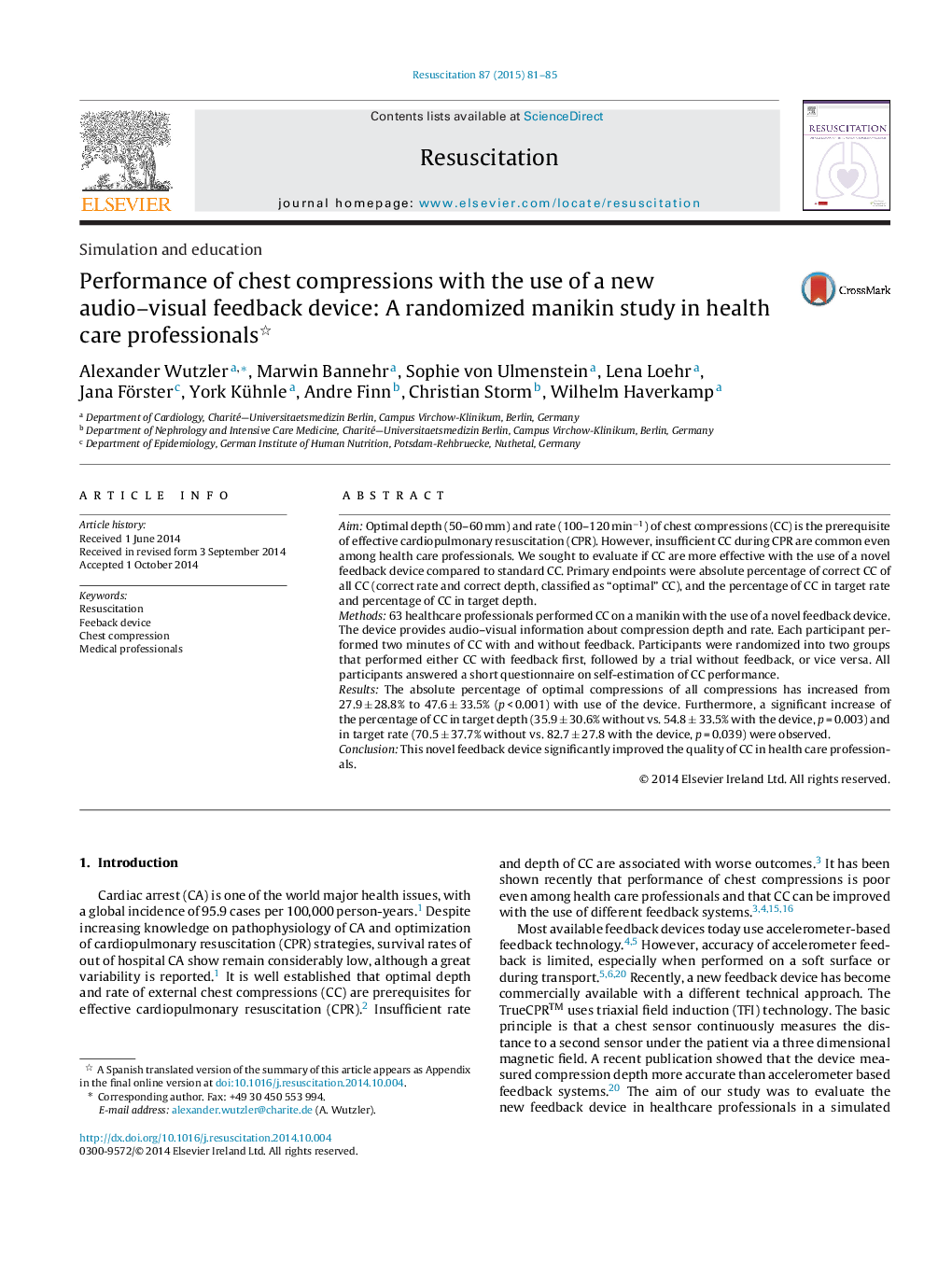| Article ID | Journal | Published Year | Pages | File Type |
|---|---|---|---|---|
| 5998037 | Resuscitation | 2015 | 5 Pages |
AimOptimal depth (50-60 mm) and rate (100-120 minâ1) of chest compressions (CC) is the prerequisite of effective cardiopulmonary resuscitation (CPR). However, insufficient CC during CPR are common even among health care professionals. We sought to evaluate if CC are more effective with the use of a novel feedback device compared to standard CC. Primary endpoints were absolute percentage of correct CC of all CC (correct rate and correct depth, classified as “optimal” CC), and the percentage of CC in target rate and percentage of CC in target depth.Methods63 healthcare professionals performed CC on a manikin with the use of a novel feedback device. The device provides audio-visual information about compression depth and rate. Each participant performed two minutes of CC with and without feedback. Participants were randomized into two groups that performed either CC with feedback first, followed by a trial without feedback, or vice versa. All participants answered a short questionnaire on self-estimation of CC performance.ResultsThe absolute percentage of optimal compressions of all compressions has increased from 27.9 ± 28.8% to 47.6 ± 33.5% (p < 0.001) with use of the device. Furthermore, a significant increase of the percentage of CC in target depth (35.9 ± 30.6% without vs. 54.8 ± 33.5% with the device, p = 0.003) and in target rate (70.5 ± 37.7% without vs. 82.7 ± 27.8 with the device, p = 0.039) were observed.ConclusionThis novel feedback device significantly improved the quality of CC in health care professionals.
